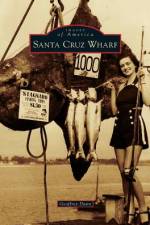von Manfred Rachbauer
24,99 €
Haben Sie sich schon einmal in die Lage eines Menschen versetzt, der anders ist, als alle anderen?Stellen Sie sich den ursprünglich kleinwüchsigen, heimatverbundenen Knaben Franz Winkelmeier vor, der im 14. Lebensjahr übermäßig zu wachsen beginnt. Zunächst wird er stolz darauf gewesen sein, plötzlich größer zu sein als seine Klassenkameraden, seine Geschwister, seine Eltern. Und auf einmal bemerkt dieser Jugendliche, dass er wegen seiner Größe unwillkürlich alle Blicke auf sich zieht, in den Mittelpunkt des Interesses gerückt wird, vielleicht sogar Witze über ihm gemacht werden. Ist es da ein Wunder, wenn er sich verschämt zurückzieht, wenn sich Besuch bei seiner Familie ankündigt und er sich in der Tenne versteckt, weil dies der einzige Ort ist, wo er sich aufrecht - und nicht gebückt - bewegen kann?Es ist derselbe bedrückte Mensch, der sich entschließt, sich als "Naturwunder" zur Schau zu stellen, weil er erkannte, dass diese Schaustellungen jene Möglichkeit sind, seinen Lebensunterhalt zu verdienen. Denn sein Wachstum machte es unmöglich, den angestrebten bäuerlichen Beruf zu ergreifen. Stellen Sie sich weiter einen heimatverbundenen Menschen vor, der vermutlich kaum über Lengau, Friedburg hinaus gekommen ist und sich plötzlich in der damals großen, weiten Welt der Donau-Monarchie befindet. Noch mehr: in Berlin, Paris und London zu Gast ist. Ein Mensch, von mäßiger Schulbildung, der ein interessanter Interviewpartner wird und Hoheiten, Prinzen gewitzt Rede und Antwort steht.Wie geht es jemanden, der aus ärmlichen Verhältnissen kommt und auf einmal zu einer berühmten Persönlichkeit wird, über die man weltweit berichtet, wie z.B. in Tansania, Honolulu, Neuseeland usw., also Länder, die er niemals selbst besucht hat und Auftrittsgagen bekommt, von denen die Bewohner in der Heimat nur träumen können? Welche Empfindungen hat jemand, der sich relativ bald zwar alle Güter leisten kann, die sein Herz begehrt, aber sich aus geschäftlichen Gründen nicht frei bewegen darf und wenn, dann nur nachts? Dem nichts in seinem Leben angepasst ist, weder Kleidung, Wohnung, Fahrgelegenheiten, Betten (in Gasthöfen wurden z.B. vier Betten zusammengerückt, damit er sich überhaupt ausruhen konnte), Kirchenbänke, dem die natürlichen Sehnsüchte unerfüllt blieben.Das Buch "Franz Winkelmeier, Der Riese von Lengau - Eine Spurensuche" gibt Einblicke in das Leben eines heimatverbundenen Riesen, der auszog, um ein Stück Normalität in der großen weiten Welt zu finden.












